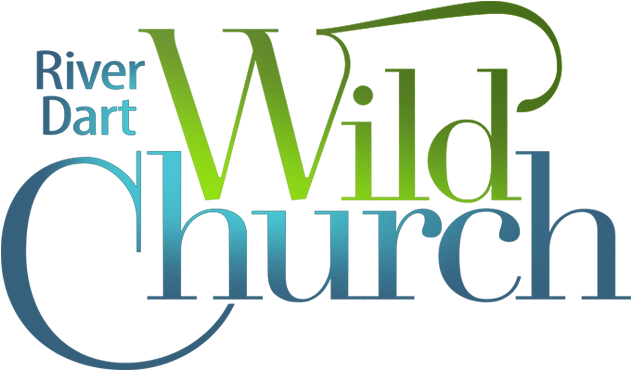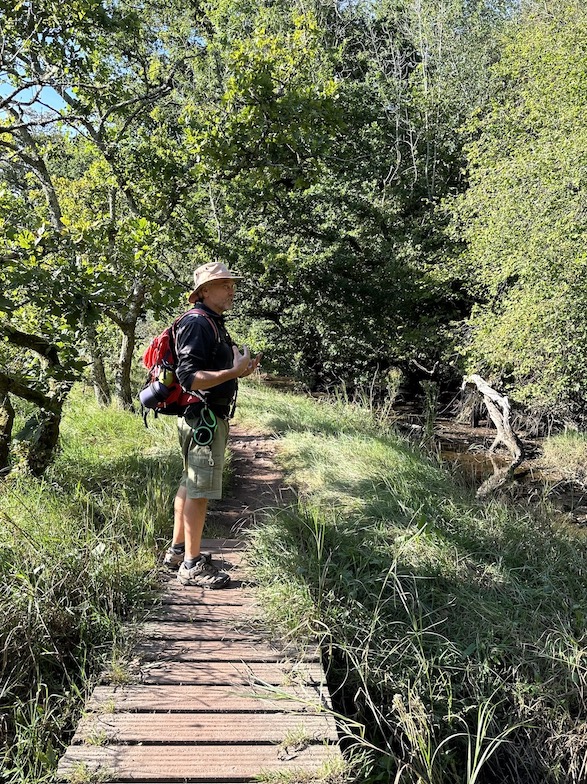
The first stage of the ‘Salmon and Saltmarsh’ part of our River Dart Way pilgrimage is now available as both a self guided route and a series of guided pilgrimages in collaboration with the British Pilgrimage Trust. So I am creating this page as a ‘one stop’ gathering place for further information and resources about saltmarsh. Our River Dart Wild Church pilgrims and guides this year have commented on how interesting it has been to learn about the significance of saltmarsh, as a fascinating ecosystem and carbon store, and one that many of us had previously overlooked or been unaware of. Saltmarsh thrives in the uppermost fringe of the intertidal zone of estuaries and sheltered coastlines, regularly (but not always) washed by sea or brackish water. As such it supports a unique community of salt tolerant plants and provides a rich habitat for wildlife.
I was fortunate to take a saltmarsh walk with Nigel Mortimer, as shown here at Longmarsh, Totnes, which is one of the areas of saltmarsh selected for surveying and potential restoration through Phase Two of the Bioregional Learning Centre’s Living Dart Saltmarsh Project. As the Estuaries Officer for South Devon AONB, Nigel kindly shared lots of fascinating links and resources, and helped me to create the five fold guide below, to enable amateur saltmarsh lovers like myself to offer some practical help.
All text and images are my own, unless otherwise stated
© Sam Wernham 2023
Give a helping hand to saltmarsh
- Saltmarsh is vulnerable – please minimise the impact of feet, dogs, paddles and watercraft… including being aware of boat speed, as strong wakes can cause erosion. Please avoid camping, picnics and barbecues on saltmarsh.
- Saltmarsh provides vital habitat – please don’t litter and you can help by carefully picking up any man-made litter you see – thanks! By their nature, saltmarsh trap a lot of natural leaf-litter, helping trap yet more carbon.
- Saltmarsh is unique and an important part of the wider environment on which we all depend – so you can also help by being careful about what goes into the water system from your home… please put your food waste in the compost, not down the sink or toilet, and please don’t dump garden waste by, or plant up, stream sides.
- Saltmarsh needs our support – donate to your local wildlife trust or to the Wildfowl and Wetlands Trust to help fund their saltmarsh projects.
- Saltmarsh is fascinating – being aware and curious, especially about any changes you notice, is good for our wellbeing and for saltmarsh. Why not look carefully (a hand lens helps), take photos and share what you discover with friends and family. You can also share wildlife sightings and contribute to citizen science data collection with iRecord. Or find out more about saltmarsh from the comfort of your own home through the resources below.
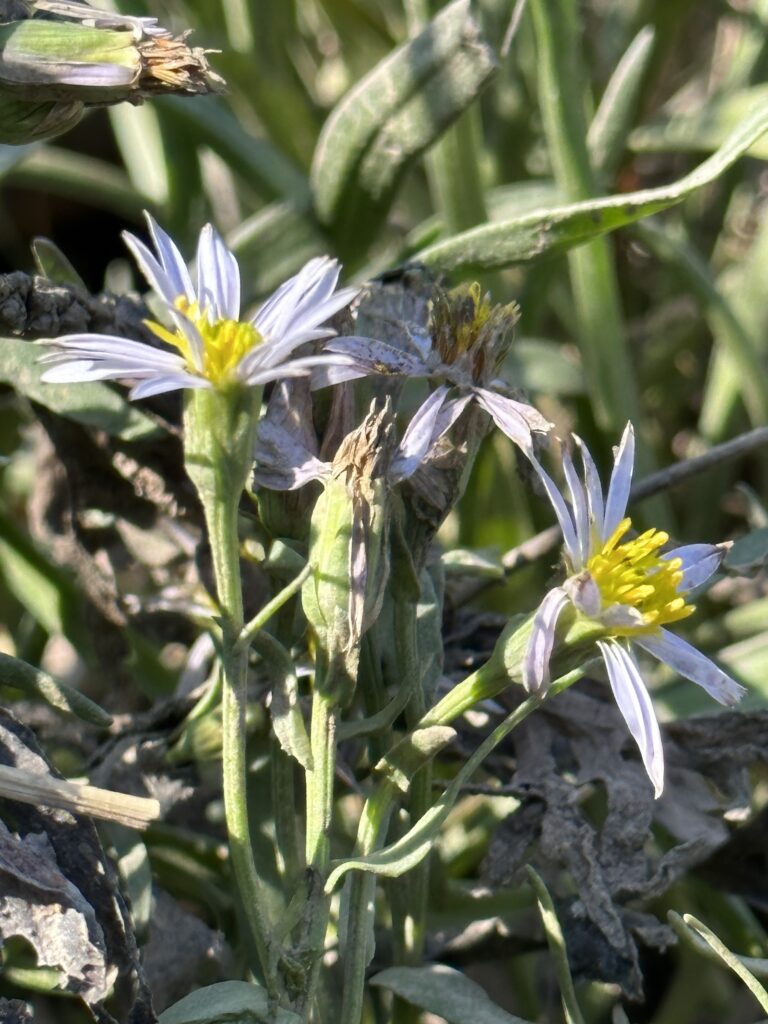
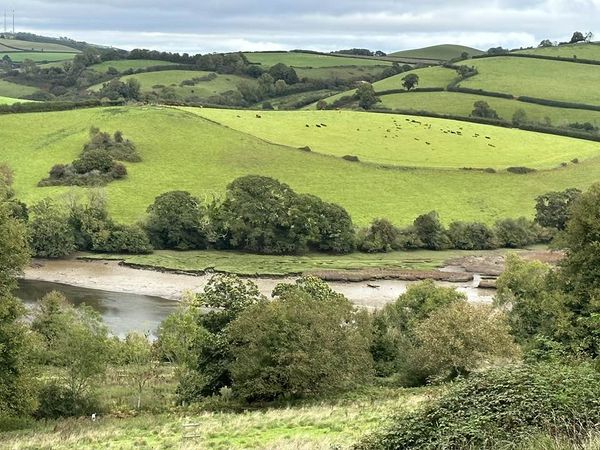
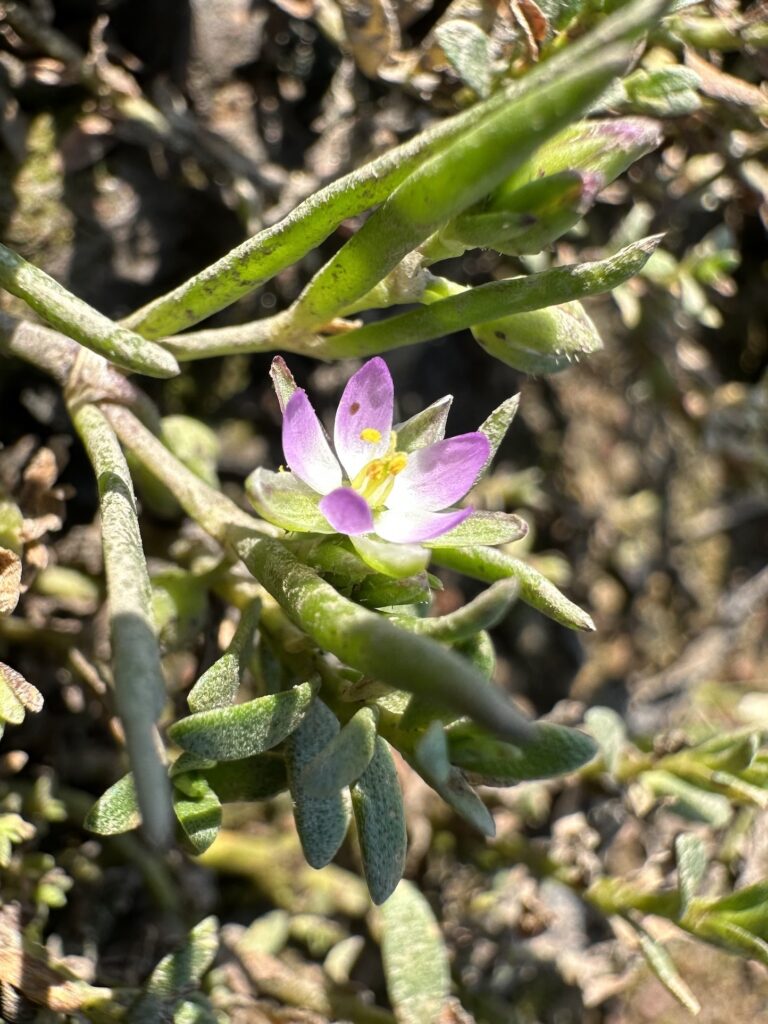
- A good place to start learning about River Dart saltmarsh is to visit the Bioregional Learning Centre’s project page: Living Dart – The Saltmarsh Project. Here they summarise the significance of saltmarsh: ‘outside the Tropics saltmarshes bury carbon at a greater rate and store more carbon per unit area below ground than their forest counterparts on land. They absorb tidal and wave energy and help prevent flooding. They help regulate water quality by mopping up excess nutrients such as phosphates & nitrates from the river catchment. They are important places for wading birds to breed, spend the winter and stop off during migration’. Dart Habour also has a helpful page here.
- For a wider introduction to saltmarsh and to see some beautiful images & video, visit this page from the Wildfowl and Wetlands Trust.
- For more about creating and managing saltmarshes for carbon storage, see the WWT document on this here.
- There are also environmental handbooks available through the Environment Agency including one on saltmarsh here.
- For more about marvellous mud, check out Buglife’s mudflat page here.
